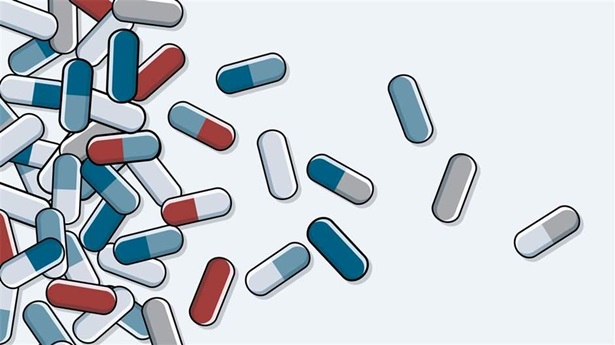37 Scientists Push Critical Biomedical Research Forward
Pew’s 2021 scholars and fellows chosen to pursue groundbreaking discoveries
The COVID-19 pandemic has underscored the critical value of scientific innovation in advancing human health. Since last year’s national public health emergency declaration, scientists and researchers have made extraordinary progress in better understanding the novel coronavirus and, more importantly, developing vaccines and treatments to protect people across the globe.
For more than 35 years, The Pew Charitable Trusts has supported this type of creativity and risk-taking among early-career biomedical scientists. This year, 37 researchers join the Pew Scholars Program in the Biomedical Sciences, the Pew Latin American Fellows Program in the Biomedical Sciences, and the Pew-Stewart Scholars Program for Cancer Research. They will receive multiyear grants to pursue scientific interests in the United States and Latin America.
The 2021 scholars and fellows are pioneers in their research areas, advancing human health during a period when the world is searching for scientific insights.
The dynamic human genome
The human genome contains tens of thousands of genes that are packaged into chromosomes and helps to determine traits and health characteristics. Because of the prominent role that genes play in development and disease, several new grantees are researching aspects of genes’ behavior and regulation.
Female mammals possess two X chromosomes, one of which becomes “silenced” so that gene activity remains the same as in males with only one X. One researcher will dissect the silencing mechanism to understand whether disrupting this process may help reactivate genes to treat disorders linked to the X chromosome, such as Fragile X syndrome.
Chromosome structure is also important for gene regulation. Other researchers now supported by Pew are examining how the packaging of developmental genes within the chromosome influences human traits, and how elements, known as enhancers, make contact with cancer-associated genes to alter the latter’s activities.
Pieces of genetic information can move within or between organisms for different biological purposes. One researcher is working to understand how certain sequences “jump” around the genome during development to prepare human immune systems to respond to infections. Another is exploiting how sequences move to engineer novel gene-editing tools, while a third is studying gene transfer between species and the effect on an organism’s fitness and survival.
Novel targets in cancer and aging
The new cohort will continue building collective knowledge on cancer and aging to advance treatment options in each respective field. One researcher will investigate how assemblies of proteins regulate the expression of cancer-promoting genes, while another will develop computational methods to predict patient response to cancer immunotherapy. Elsewhere, a new grantee will probe the structure of a protein channel that is overactive in leukemia, and another will examine how the depletion of the protein CEPBD can cause disease relapse in acute myeloid leukemia.
Alzheimer’s disease—predicted to affect nearly 13 million people in the United States by 2050—is a critical area of aging work. One researcher will investigate how the proteins associated with Alzheimer’s damage neurons, while another will explore if oxytocin, a hormone that supports social bonding, can protect neurons from deterioration.
Immune system protections
The immune system is composed of a complex network of cells that help protect us from disease. However, immune cells must also work with other cells to maintain a balance of activity; they must eliminate pathogens while not causing excess inflammation that can damage healthy cells. One researcher will explore how different cell types work together to keep the immune response in check, while another will examine how the placenta protects the embryo from rejection by the maternal immune system.
Another researcher is studying a type of immune cell, the macrophage, to understand how it safely clears away dead cell debris without triggering an inflammatory response—work that could lead to treatments for autoimmune disorders. Finally, another scientist will examine the genetic programming of T-cells to understand how these immune cells recognize and destroy tumors.
Animal behavior
How and why animals, including humans, act the way they do has long been a central curiosity among scientists. This year’s group of researchers will examine mechanisms that drive animal behavior, from movement to sleep.
One will map the neural circuits of rats to measure how swiftly they move toward a reward, and how dopamine, a brain chemical that affects mood, affects the neural circuit. Another will decode how neurons in mice decipher odor-based information to help guide decisions to approach or avoid mates, enemies, or food, while a third will study mosquitoes to learn how to control biting of human hosts.
Certain molecules also help guide an animal’s seasonal rhythm with effects on processes such as migration and hibernation. One researcher will work to identify the molecules that control the fluctuations of a protein called EYA—which scientists have identified as a potential “season sensor”—and also probe how it may affect daily rhythms of mood, appetite, and sleep. Two others will examine nutrition and sleep, including how animals select food to satisfy changing needs and how neural circuits guide animals through different stages of sleep.
Microorganisms and human health
Microorganisms such as viruses and bacteria play critical roles in human health, from regulating digestion to the spread of infectious disease. Several researchers from this year’s class will assess the impact of these tiny entities on people’s well-being.
Scientists will investigate how microorganisms interact with their surroundings. One scholar will probe how bacteria navigate within the habitat of human tissues to better understand how cellular environments affect bacterial growth and their ability to establish infections. Another will look into how archaea, unique single-celled organisms often found in extreme environmental conditions, radically reconfigure their shapes based on interactions with the world.
Pathogenic microorganisms can endanger many areas of the body, including the lungs and brain. One researcher will explore how toxins produced by Staphylococcus aureus trigger a condition that can cause organ damage—with the goal of devising strategies to combat such consequences. Another will study how tuberculosis-causing bacteria resist antibiotics, while a third grantee will characterize the mechanisms through which infections damage the brain, using a meningitis model in zebrafish. The collective effort could inspire new strategies to fight infectious disease and offer insights into the behavior of microorganisms around us.
Kara Coleman is the director of The Pew Charitable Trusts’ biomedical programs, including the biomedical scholars, Pew-Stewart Scholars for Cancer Research, and Latin American fellows programs, and Jennifer Villa is a principal associate supporting the programs.











